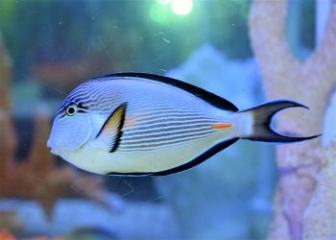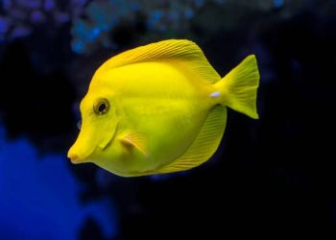Marbled Bullfish - A colorful, striking bullfish species.
Blog | by
The marbled bullfish (Balistoides conspicillum) is a large, colorful, eye-catching marine aquarium fish with an aggressive temperament and interesting defense methods.
The marbled bullfish (scientific name Balistoides conspicillum), a species of fish belonging to the Balistidae family, has an extremely colorful and impressive appearance and color with jet-black scales dotted with round white spots and eye-catching yellow nets. This is an ornamental fish that is both unique and beautiful, very suitable for aquariums.
If you want to learn more about the origin, habits and how to raise bullhead fish in the most detailed way, please read the article below from nice fish !
Information about marbled catfish :
| Scientific name | Balistoides conspicillum |
| Common name | Catfish, Spinyfin Catfish |
| Class | Actinopterygii - Ray-finned fishes |
| Set | Tetraodontiformes - Puffer fish |
| Surname | Balistidae - Leatherback fish |
| Spend | balisthesis |
| Species | B. conspicillum |
| Source | Indian Ocean and Pacific Ocean |
| Size | 30 - 50 cm in adult fish |
| Lifespan | 5 - 10 years |
Origin of marbled fish
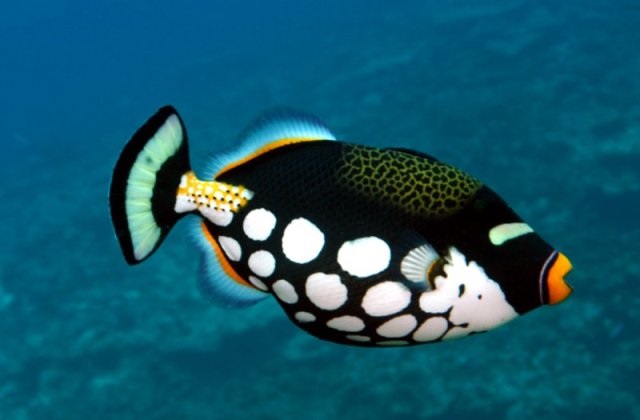
Diamondback catfish, a marine ornamental fish belonging to the leatherback fish family.
The scientific name of the Balistoides conspicillum is Balistoides conspicillum, also known as the spiny-finned fish, leopard fish, a species of fish belonging to the Balistidae family. Originating from the Indian Ocean and the Pacific Ocean, specifically as follows:
- From East Africa to the seas of Southeast Asia such as Vietnam, Indonesia, Philippines.
- Northern Australia, Papua New Guinea, Hawaiian Islands.
They often live in coastal coral reefs, lagoons, and coral slopes at depths of 1 - 75 meters below sea level.
In Vietnam, this fish species appears in many sea areas such as Nha Trang, Phu Quoc, Con Dao and Truong Sa archipelago.
Appearance of marbled cowfish
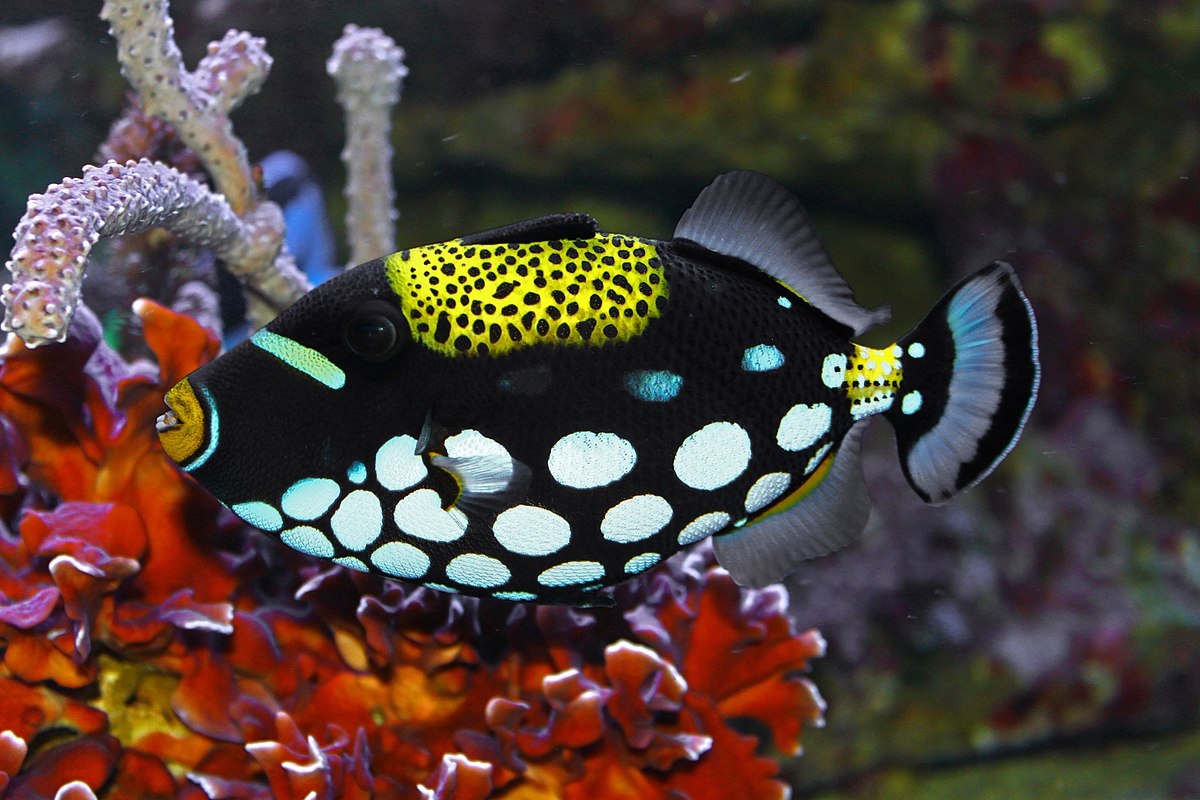
The impressive, eye-catching colors of a marbled bullfish.
The bullfish is an ornamental fish with a very prominent and easily recognizable appearance in the bullfish family, specifically as follows:
- Color : The fish's body has a dark black or dark gray background color, dotted with large, bright white spots from the middle of the body down to the belly of the fish, like "marble balls", which is also the origin of the name of this fish species. In the middle of the fish's back there is a bright yellow patch with very prominent black spots.
- Head : Has a pale yellow or orange patch around the mouth, a white stripe across the middle of the eye from one side of the head to the other, around the forehead and eyes there is often a pattern of small yellow spots or undertones.
- Shape : Oval body, flattened from both sides, similar to many other species of cow fish.
- Mouth : Small, protruding forward, strong teeth.
- First dorsal fin : Small, black
- Second dorsal fin : Extends from mid-back to end of tail, usually light gray or transparent.
- Tail : Fan-shaped, with black border.
- Size : 30 - 50 cm in adult fish
Catfish behavior

The striped catfish prefers to live alone.
The bullfish is not only a beautiful looking ornamental fish but also very unique. Let's learn about their special habits below.
Territorial
The Bluefin tuna is a highly territorial aquarium fish. In the wild, this fish usually occupies a fixed area of coral reef and considers it its own territory. When any fish wants to invade, they will chase and even attack to protect their "home".
Temperament changes with age
At each different stage, the marbled fish will have different temperaments, specifically as follows:
- Baby fish : Gentle temperament, often swim in schools, not very territorial.
- Adult fish : Aggressive, solitary, highly territorial.
- Aquarium fish : Aggressive, easily overpowers other fish and it also does not like to be bothered.
Interesting defense strategy
When the fish feel threatened, they will quickly seek shelter in crevices in rocks, then raise their first fin like a snapper to "pin" themselves firmly in the crevice. Some can even make a "click" sound and fluff their fins, lowering their bodies to threaten their opponents.
Is an omnivorous fish, leaning towards animals
The marbled bullfish is an omnivorous marine aquarium fish, but will be more inclined towards animals, they only eat seaweed and plants when there is a lack of food.
These fish have strong teeth so they can easily crush hard-shelled sea creatures or even turn sea urchins upside down to eat the soft meat inside.
Breeding by season
The striped catfish is a seasonal spawning fish, depending on the geographical area. Their spawning process is as follows:
- First, the female will choose a location to lay her eggs, usually on sandy substrates near rocky reefs.
- Mating usually occurs in the early morning, often after a full moon.
- The female fish will then lay thousands of tiny eggs that adhere to the rock substrate.
- After laying eggs, the female fish will take on the task of protecting the eggs and continuously fanning the water to keep oxygen.
- After a few days, the eggs hatch into larvae, which float in the water.
Guide to raising catfish from A to Z

A marbled bull fish is swimming happily in the tank.
Right below, we will guide you on how to raise marble fish in detail from A to Z for both beginners and experienced fish farmers. Let's find out now!
Prepare the tank to raise the catfish
First, you need to prepare a suitable aquarium to raise marbled fish, to help them have the most suitable living environment, make sure the following requirements:
- Tank volume : Minimum 250 - 300 liters for juvenile fish under 15 cm, 500 - 700 liters for adult fish.
- Material : Choose glass or mica tank.
- Filtration system : Choose overflow or strong external filtration.
- Wave generator : Use a small capacity wave generator to create a gentle sea current.
- LED lights : Choose the right type of LED lights for marine fish farming.
- Skimmer : Required to filter excess protein and organic matter in the tank.
- Aquarium decoration : Use live rocks to create caves and crevices for fish to hide in. The seabed should be fine sea sand.
Suitable water parameters for raising catfish
To help the catfish quickly adapt to the artificial tank environment and develop in the best way, the water quality in the tank must meet the following basic requirements:
- Temperature : 24 - 28 degrees Celsius
- pH : 8.1 - 8.4
- Salinity : 1.020 - 1.025 SG
- NH3. NO2 : 0 ppm
- NO3 : < 20 ppm
- Calcium : 400 - 450 ppm
- KH : 8 - 12 dKH
Tank cycle
This is an extremely important step before releasing the fish into the tank to help prevent the fish from being stressed and shocked by the water. The process goes as follows:
Step 1: Prepare the tank
- Mix artificial sea salt to achieve salinity from 1.020 - 1.025
- The tank is fully equipped with filter system, wave maker, live rock, dead rock,...
- Turn on the filter and create a continuous flow 24/7
Step 2: Create microorganisms
- Method 1 Add a certain amount of food such as fish, shrimp, bran into the tank to let it decompose and create Ammonia + add saltwater microorganisms every day.
- Method 2 Use live rock with pre-treated microorganisms + supplement microorganisms every day + combine with fish and shrimp food
Step 3: Monitor the process
- Typically, the cycle will take 2 - 4 weeks.
- Every 3 - 4 days, use a water test kit to check. When the nitrite level has decreased to 0 and Nitrate appears at a level below 20 ppm, the cycling is complete and ready for fish release.
What do marbled fish eat?
Catfish are omnivorous so they can eat many different types of food, but mainly protein-rich species with hard shells or tough meat, specifically as follows:
Food in nature :
- Small crustaceans such as shrimp, crab, sea crab
- Mollusks clams, snails, oysters
- Starfish, sponges, small fish or soft corals, even sea anemones.
Food when raised in artificial tanks :
- Fresh frozen food: such as shelled shrimp, chopped squid, fish fillets, cockles, scallops, oysters, crab meat, crab, etc.
- Industrial pellet feed: Pellets specifically for carnivorous marine fish, gel feed.
Note :
- Fish should be fed hard-shelled foods like crabs, snails, and clams 2-3 times a week to help them wear down their teeth.
- Feed fish 1 - 2 times/day.
Which fish should and should not be kept with striped catfish?
As shared above, the marbled bull fish is an aggressive species, highly territorial when mature, so if you want to raise them together, you need to choose suitable fish species to avoid conflicts, specifically as follows:
Fish should be kept together : The size should be similar or larger than the catfish, not too docile, swim fast, and not have long, flashy fins.
- Large Angel Fish
- Emperor fish
- Big butterfly fish
- Large threadfin fish
- Large parrot fish
Fish should not be kept together : Principle: do not choose small, weak, or slow swimming fish.
- Little Nemo
- Sea dragon fish
- Hippocampus
- Marine betta fish
- Soft corals, sea anemones, sea urchins, starfish, clams, oysters,...
Health care and disease prevention for catfish
Taking care of the health and preventing diseases for the catfish is very important to help them stay healthy and live long in the artificial tank. Specifically as follows:
Signs of abnormal fish :
- Fish gasping for breath or splashing water: Fish lacks oxygen, high ammonia levels, fish is stressed
- Fish often rub against rocks and swim jerkily: Fish has skin parasites.
- Blurry, swollen eyes: Fish has infection, swollen eyes.
- Fins are torn, swollen edges: Fish is infected with fungus or bacteria.
- On the fish's skin there are tiny white spots like grains of salt: The fish is infected with white fungus, this is a very common disease in ornamental fish.
Fish disease prevention :
- Quarantine newly purchased fish for 10 - 14 days before releasing them into the common tank.
- When fish are sick, separate them into separate tanks to avoid cross-infection.
- Use appropriate medications, such as copper sulfate to treat ich, melafix to treat fungus, focus + metroplex to treat endogenous bacteria.
- Aerate throughout the treatment for fish.
- Individuals bathe in fresh water for 2 - 3 minutes.
- Avoid changing water too often when fish are stressed.
- Limit sudden changes in water factors such as temperature, pH, salinity,...
Price of marbled fish
Currently, the price of marbled bullfish in the Vietnamese ornamental fish market will fluctuate depending on the origin, size, color and store selling. Here are some prices for your reference.
- Baby striped catfish size < 10 cm : From 1,000,000 - 2,500,000 VND/fish.
- Adult catfish over 15 cm in size : 3,000,000 - 5,500,000 VND/fish.
Price of marbled catfish on the international market :
- Balistoides conspicillum small size 1.25 - 1.75 inch : About 162$
- Balistoides conspicillum adult size 2.75 - 3.75 inches : About $204
Beautiful marbled fish pictures
Finally, let's admire the colorful, eye-catching beauty of the marbled bullfish through the images we have collected below!
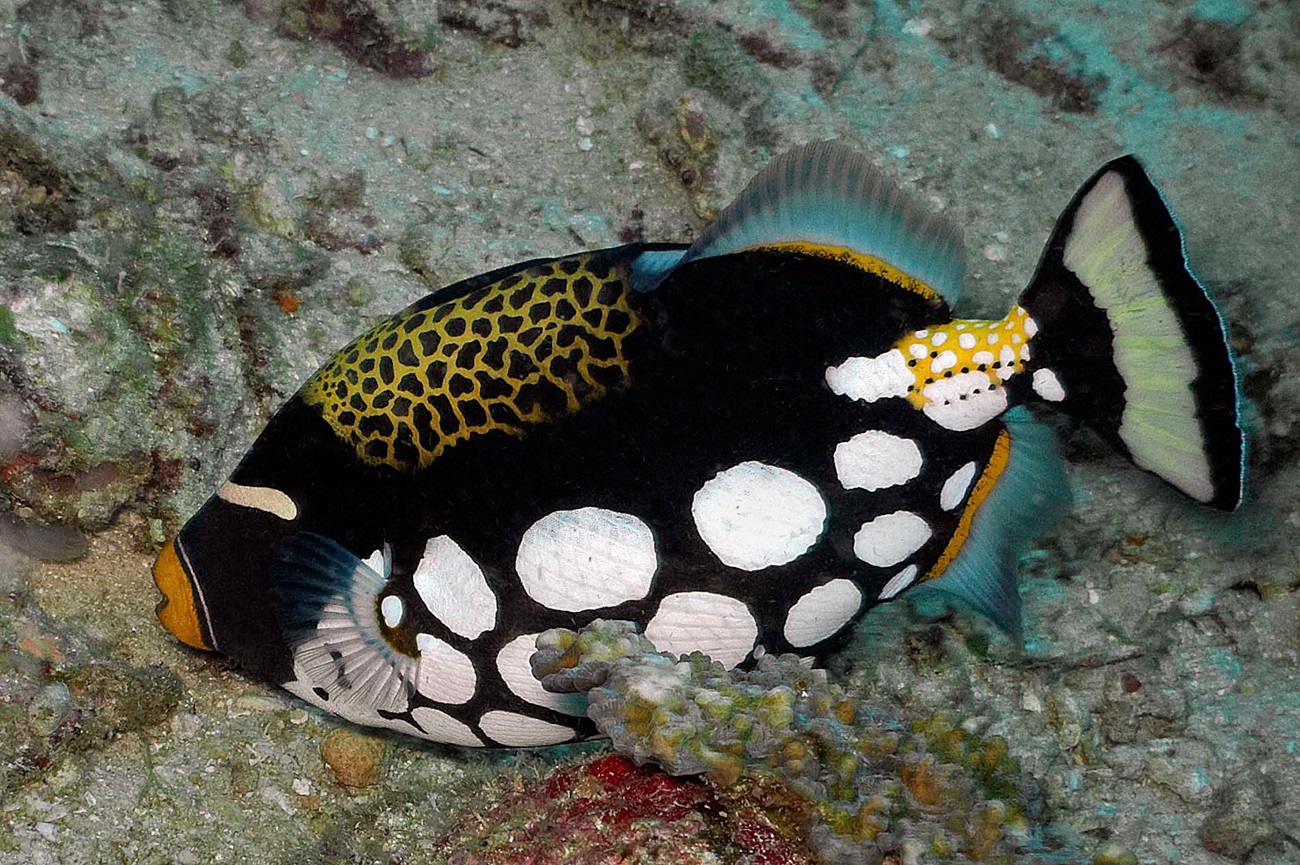
A marbled bullfish is swimming close to the bottom.

The colorful appearance of the marbled bullfish swimming next to the coral reef.
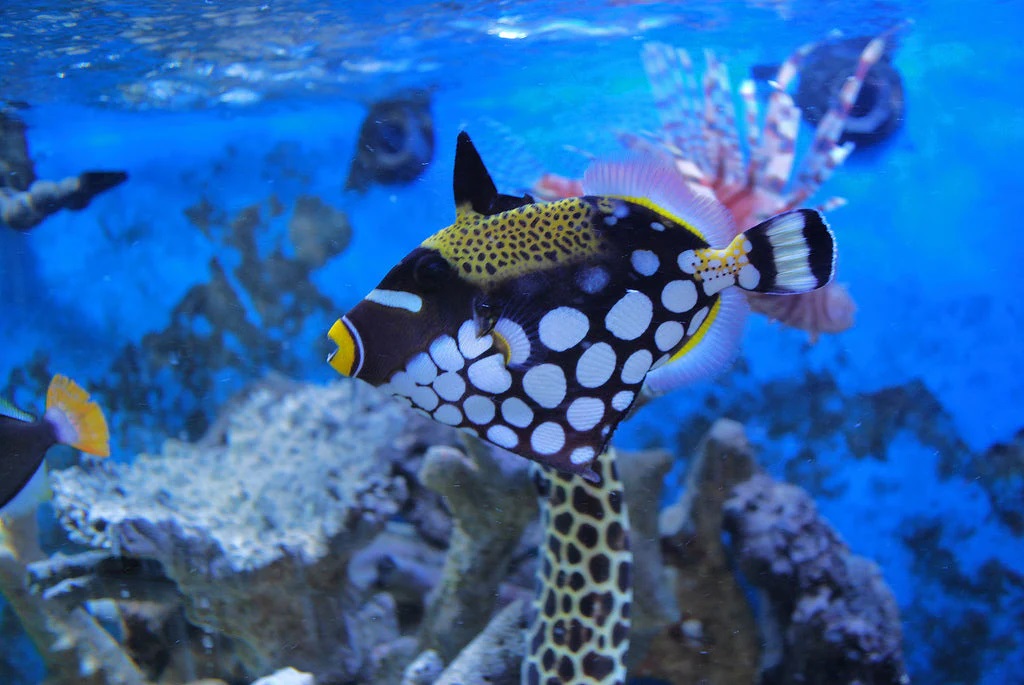
A bullfish is swimming in an artificial aquarium.
Through the above article, nicefish.net has shared all the information about the marbled cowfish , hopefully through this, you have understood and know how to take care of this fish. This is indeed a beautiful and adaptable marine ornamental fish, suitable for even inexperienced breeders.
If you want to learn more about other marine aquarium fish to add to your aquarium, please visit our Blog section!
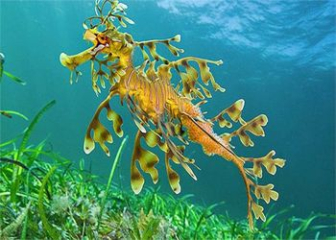
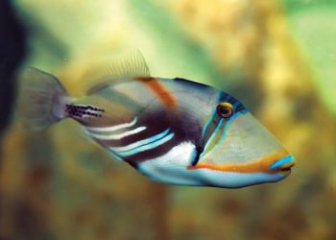
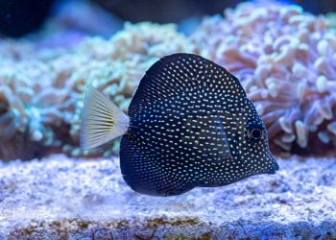
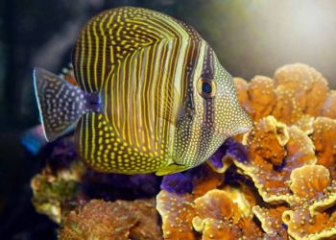
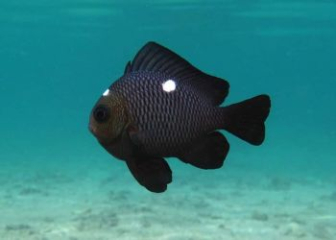
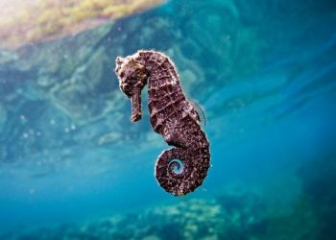






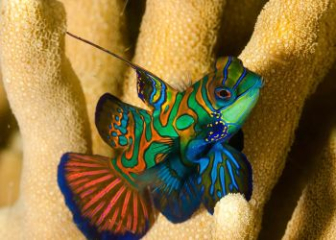

_350x250.jpg)


